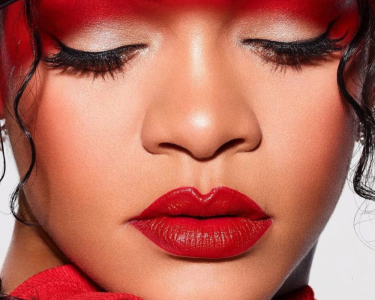Introduction
Are you tired of reading the same old feminist literature written by the same type of women? The canon of American feminist literature has been dominated by a narrow spectrum of voices for far too long. It’s time to break out and explore diverse perspectives from African American, Asian American, Native American, Latina/o, and white women writers. Join us as we delve into the world beyond the canon and discover new voices that will broaden your understanding of feminism in America.
The Canon: A Brief History
The Canon, a term used to refer to the set of works that are considered standard or authoritative in a particular field, has been an important aspect of literary history. In Western literature, the canon has traditionally consisted primarily of works written by white men.
This is not surprising considering that for centuries women and people of color were often excluded from formal education and publishing opportunities. As a result, their voices were largely absent from mainstream literature.
However, as feminist movements gained momentum in the 20th century and beyond, there has been growing recognition for the need to expand the canon to include diverse voices. This includes writers who have historically been marginalized such as African American women writers, Asian American women writers, Native American women writers and Latina/o Women Writers.
By including these diverse perspectives in feminist literature we are able to gain greater insight into issues related to race gender inequality while also celebrating the unique experiences and identities that make up our society.
Diverse Voices in Feminist Literature
Feminist literature has come a long way since its inception. Today, more and more female writers are using their voices to explore topics such as gender equality, sexual orientation, race relations, and diversity. However, for many years the majority of feminist literature was written by white women.
Fortunately, there has been a shift towards greater representation in recent times with African American women’s writing gaining much-needed recognition. Authors such as Toni Morrison and Alice Walker have opened up an avenue for other black feminists to express themselves through their work.
Asian American women writers like Maxine Hong Kingston provide us with insight into challenges unique to Asians living in America while Native American women’s authors like Leslie Marmon Silko bring forth issues that plague indigenous peoples of America.
Latina/o Women Writers including Sandra Cisneros offer another perspective on feminism through the lens of Latinx culture. These diverse perspectives allow readers to gain a broader understanding of the intersectional nature of feminism and how it impacts individuals from different backgrounds.
Diverse voices in feminist literature expand our knowledge about the experiences faced by all members of society regardless of race or ethnicity. It is vital that we continue promoting works written by marginalized groups so that everyone can feel represented and heard within this important movement towards gender equality.
African American Women Writers
African American women writers have contributed significantly to feminist literature in the United States. These authors bring a unique perspective to their writing, often incorporating themes of race, gender, and class into their work.
One notable author is Toni Morrison, whose works such as “Beloved” and “The Bluest Eye” explore the experiences of black women in America. Another influential writer is Maya Angelou, who wrote autobiographical works such as “I Know Why the Caged Bird Sings,” which delves into issues of racism and sexual assault.
Other African American women writers include Alice Walker (“The Color Purple”), Audre Lorde (“Sister Outsider”), and Zora Neale Hurston (“Their Eyes Were Watching God”). Each brings a distinct voice to feminist literature through their storytelling and exploration of intersectional identities.
Through their writing, these authors have challenged traditional notions of feminism that center primarily on white middle-class experiences. Instead, they offer perspectives that speak directly to the experiences of marginalized communities in America.
Asian American Women Writers
Asian American Women Writers
Asian American women writers have been adding their unique voices to feminist literature for decades. These authors bring a diverse range of experiences, cultures, and perspectives to the table, often exploring themes such as identity, family dynamics, and cultural heritage.
One of the most notable Asian American women writers is Maxine Hong Kingston. Her novel “The Woman Warrior” explores her Chinese-American upbringing through a blend of memoir and folklore. Another author making waves in contemporary literature is Celeste Ng with her novels “Everything I Never Told You” and “Little Fires Everywhere”, which both explore themes related to race, class, and gender.
Other noteworthy Asian American women writers include Amy Tan with her best-selling novel “The Joy Luck Club,” Cathy Park Hong with her poetry collection “Engine Empire,” and Yiyun Li with her short story collections such as “Gold Boy Emerald Girl.” These authors challenge traditional literary forms while contributing fresh perspectives on feminism through their works.
Asian American women writers have made significant contributions to feminist literature by bringing their unique perspectives on womanhood within different cultural contexts. Their stories provide valuable insights into issues that are often overlooked or ignored in mainstream media.
Native American Women Writers
Native American women have been writing and telling stories for centuries. However, their voices have often been overlooked or silenced in mainstream literature. Today, a new generation of Native American women writers are bringing their unique perspectives to the forefront.
One such writer is Leslie Marmon Silko, a Laguna Pueblo author who has written several influential books including Ceremony and Almanac of the Dead. Her work explores themes of identity, tradition, and the impact of colonialism on Native American communities.
Another notable voice is Louise Erdrich, an Ojibwe author whose novels include Love Medicine and The Round House. Her writing tackles issues such as generational trauma, cultural preservation, and spirituality.
Joy Harjo is another prominent figure in contemporary Native American literature. A member of the Muscogee Creek Nation, she has published numerous collections of poetry and was recently appointed as US Poet Laureate—the first Native American to hold this position.
These women are just a few examples of the rich diversity within Native American literature. Their work challenges stereotypes and offers complex portrayals of indigenous experiences that are too often reduced to caricatures in popular culture.
Latina/o Women Writers
Latina/o women writers have made significant contributions to feminist literature in the United States. These writers bring a unique perspective to the table, as they often navigate issues related to race and gender simultaneously. Their works challenge traditional notions of femininity and womanhood, offering nuanced portrayals of Latinx identity.
One notable Latina writer is Sandra Cisneros, whose 1984 novel “The House on Mango Street” has become a classic in American literature. The book follows a young Mexican-American girl named Esperanza as she navigates life in Chicago’s Latino neighborhood of Humboldt Park. Through Esperanza’s experiences, Cisneros explores themes such as poverty, sexual violence, and racial prejudice.
Another influential Latina writer is Julia Alvarez, who was born in the Dominican Republic and immigrated to New York City with her family at age ten. Her novels often deal with themes of immigration and cultural assimilation. In her book “How the García Girls Lost Their Accents,” she tells the story of four sisters who move from the Dominican Republic to New York City during political upheaval in their home country.
Other notable Latina/o women writers include Ana Castillo (“So Far From God”), Gloria Anzaldúa (“Borderlands/La Frontera: The New Mestiza”), and Denise Chávez (“Loving Pedro Infante”). Together these authors demonstrate that there is no one-size-fits-all experience when it comes to being a woman or Latinx person living in America today.
White Women Writers
White women writers have been a significant part of feminist literature in the United States. They have made great contributions to the genre, exploring themes related to gender and identity.
One of the most famous white women writers is Virginia Woolf. Her works are considered some of the finest examples of modernist literature. Through her novels like Mrs Dalloway and To The Lighthouse, she explored issues surrounding femininity, patriarchy, and sexuality.
Toni Morrison is another iconic white woman writer who has contributed significantly to feminist literature. She won both the Pulitzer Prize and Nobel Prize for Literature for her works that explore African American life in America. In her novel Beloved, she addresses issues such as motherhood, slavery and its aftermath.
Margaret Atwood is known for writing dystopian fiction with strong female characters at their center.. In The Handmaid’s Tale she created one of contemporary fiction’s most unforgettable heroines Offred – a symbol of female resistance against patriarchal society..
These authors show that feminism isn’t just about race or ethnicity but it’s also about understanding how gender shapes our lives regardless of skin color or culture we come from.
Conclusion
Feminist literature by American women is a rich and diverse field that encompasses voices from all backgrounds. While the canon has historically focused on white women writers, there are many other feminist narratives waiting to be explored.
African American women writers like Toni Morrison, Alice Walker, and Audre Lorde have contributed immensely to this genre with their unique experiences of oppression and resistance. Asian American women writers like Maxine Hong Kingston and Amy Tan have also added to the conversation with their portrayals of immigrant experiences.
Native American women writers such as Leslie Marmon Silko and Joy Harjo explore themes of identity, heritage, spirituality in their work while Latina/o Women Writers like Sandra Cisneros and Julia Alvarez showcase stories of migration, cultural hybridity, feminism through their writing.
By expanding our reading lists beyond the traditional canon we can gain new insights into what it means to be a feminist in America today. We hope this article inspires you to seek out diverse voices in feminist literature and explore perspectives that may differ from your own.




